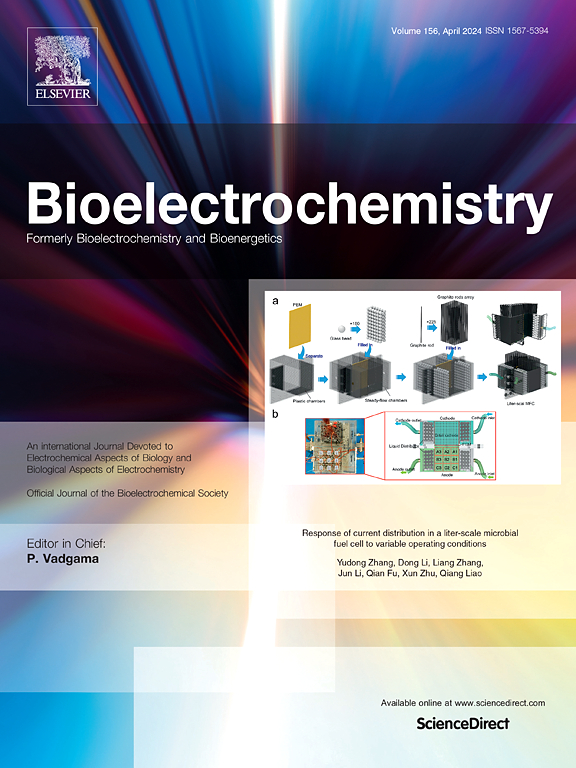利用 Au@Cu/Cu2O-rGO 的光热效应和过氧化物酶样活性对α-胎儿蛋白进行双模式检测
IF 4.8
2区 化学
Q1 BIOCHEMISTRY & MOLECULAR BIOLOGY
引用次数: 0
摘要
α-胎儿蛋白(AFP)被公认为是监测肝细胞癌(HCC)的重要标志物,利用两种不同的转导机制对其进行监测是避免假阳性或假阴性风险的有效方法。本文将 Au@Cu/Cu2O-rGO 用作光热转换器和致动器,以促进过氧化氢(H2O2)的分解,并将其进一步设计为双模式检测探针,以定量评估 AFP。复合纳米材料的光热转换效率(η)高达 54.9%,催化产生的信号是单一材料的 1.6 倍。根据产生的温度和电流信号,AFP 的灵敏检测范围为 0.01-100 纳克/毫升,检测限(LOD)分别为 5.62 皮克/毫升和 1.23 皮克/毫升。这种双模式检测方法兼具便携性和高准确性,可用于人体健康系统的检测。本文章由计算机程序翻译,如有差异,请以英文原文为准。
Dual-mode detection of α-fetoprotein using the photothermal effect and peroxidase-like activity of Au@Cu/Cu2O-rGO
α-Fetoprotein (AFP) is widely recognized as an important marker for monitoring hepatocellular carcinoma (HCC), and its monitoring using two different transduction mechanisms is an effective way to avoid the risk of false positives or false negatives. In this paper, Au@Cu/Cu2O-rGO was used as a photothermal converter as well as an actuator to promote the decomposition of hydrogen peroxide (H2O2), which was further designed as a probe for dual-mode detection to quantitatively assess AFP. The composite nanomaterials possessed photothermal conversion efficiencies (η) of up to 54.9 % and catalytically generated signals up to 1.6 times greater, relative to a single material. Based on the generated temperature and current signals, AFP has been sensitively detected in the range of 0.01–100 ng/mL, with limits of detection (LOD) of 5.62 pg/mL and 1.23 pg/mL, respectively. The dual-mode assay combines portability with high accuracy for the detection of human health systems.
求助全文
通过发布文献求助,成功后即可免费获取论文全文。
去求助
来源期刊

Bioelectrochemistry
生物-电化学
CiteScore
9.10
自引率
6.00%
发文量
238
审稿时长
38 days
期刊介绍:
An International Journal Devoted to Electrochemical Aspects of Biology and Biological Aspects of Electrochemistry
Bioelectrochemistry is an international journal devoted to electrochemical principles in biology and biological aspects of electrochemistry. It publishes experimental and theoretical papers dealing with the electrochemical aspects of:
• Electrified interfaces (electric double layers, adsorption, electron transfer, protein electrochemistry, basic principles of biosensors, biosensor interfaces and bio-nanosensor design and construction.
• Electric and magnetic field effects (field-dependent processes, field interactions with molecules, intramolecular field effects, sensory systems for electric and magnetic fields, molecular and cellular mechanisms)
• Bioenergetics and signal transduction (energy conversion, photosynthetic and visual membranes)
• Biomembranes and model membranes (thermodynamics and mechanics, membrane transport, electroporation, fusion and insertion)
• Electrochemical applications in medicine and biotechnology (drug delivery and gene transfer to cells and tissues, iontophoresis, skin electroporation, injury and repair).
• Organization and use of arrays in-vitro and in-vivo, including as part of feedback control.
• Electrochemical interrogation of biofilms as generated by microorganisms and tissue reaction associated with medical implants.
 求助内容:
求助内容: 应助结果提醒方式:
应助结果提醒方式:


